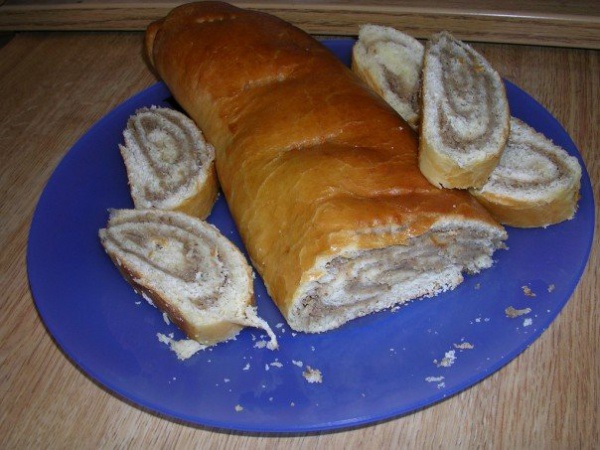Facts About Nut roll
A nut roll is a delightful pastry crafted from a sweet yeast dough, rolled out thin, spread with a nut paste (usually made from ground nuts and honey), and then rolled into a log shape before baking. You can either leave it straight or shape it into a horseshoe, and then slice it crosswise to serve. This delectable treat is popular in both the United States and Central Europe, where it goes by various names such as orechovník, makowiec, potica, gibanica, kalács, and pastiç. Nut rolls often make an appearance at weddings, Easter, Christmas, and other festive occasions.
To make a nut roll, you start by rolling out a sweet yeast dough, spreading a delicious filling over it, rolling it up, and then baking it to perfection. There are several variations, including rolled logs, loaves, and even unique textures like the "crazy loaf." In Central and Eastern Europe, nut rolls such as makowiec and bejgli employ a variety of fillings, including walnut, poppy seed, cinnamon, raisins, and more. Povitica, a Croatian specialty, features a rich, buttery dough filled with brown sugar, spices, and walnuts.
In the United States, nut rolls are especially beloved in areas with strong Central European roots, such as Pittsburgh, Joliet, and Pueblo. These treats were brought over by immigrants and have since become a favorite across various ethnic communities. Nut rolls are a Christmas staple and are enjoyed year-round in different regions. For instance, in Montana, povitica is celebrated as one of the traditional state foods.
Whether you're at a holiday gathering or just in the mood for a sweet treat, nut rolls offer a delicious way to enjoy a piece of culinary tradition!

 Serbia
Serbia